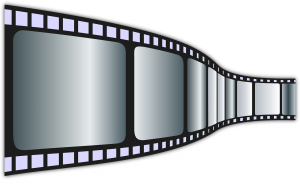Multi-Track Recording Software
Multi-track recording software has revolutionized the music production process over the past few decades. Before this technology existed, artists and engineers were limited to recording only one or two tracks at a time. The introduction of multi-track recording in the 1960s allowed for the individual recording of multiple instruments and vocal tracks which could then be layered together during mixing and editing. This opened up creative possibilities that were not available with earlier recording methods. Multi-track recording software, which emerged in the 1980s and 90s with the rise of digital audio workstations (DAWs), took these capabilities even further by allowing for non-linear, non-destructive editing and near-unlimited track counts. Today, multi-track recording software provides musicians, producers, and audio engineers with incredibly powerful and flexible tools for music creation. This essay will examine the history of multi-track recording technology, discuss key developments and innovations in multi-track recording software, and explore the creative potential enabled by this software.
History of Multi-Track Recording Technology
The earliest sound recordings, made in the late 19th and early 20th centuries, were monophonic or single-channel recordings. Performances were recorded live in real-time to disk or cylinder with no opportunity for editing. Magnetic tape recording, which began to see use in the 1930s and 40s, allowed for some new possibilities like overdubbing additional tracks sequentially, but there were still severe limitations in place. The first major step forward came in 1955 when Ampex released the first commercial 2-track recorder. This machine used one track for vocals and the other for instruments, allowing them to be balanced separately during mixing.
The next major breakthrough was the introduction of 3-track and 4-track recorders in the late 1950s and early 1960s. Artists could now record drums, bass, guitar, and vocals on separate tracks which could be blended together to create a full recording. One of the earliest adopters of this new technology was the producer George Martin, who utilized it to great creative effect on Beatles recordings like Sgt. Pepper’s Lonely Hearts Club Band. The 1960s saw a rapid expansion to 8, 16, and 24-track analog tape machines. Musicians and engineers were now able to layer parts iteratively, recording snippets of overdubs one at a time while listening to previously recorded tracks. This non-linear approach opened up new realms of experimentation.
In the 1970s and 80s, the number of available tracks continued to multiply with 48, 64, and even 128-track tape machines. We had entered the era of essentially unlimited track capacity. At the same time, new innovations like automated mixing consoles allowed for less hands-on mixing labor. The multi-track tape recorder had proven itself as an indispensable tool for recordists, enabling creative techniques like layered vocals, instrumental overdubs, and bouncing of tracks. However, analog tape did have some limitations including deteriorating quality with each generation of copying. The 1980s saw the beginnings of a digital revolution in recording technology.
The Development of Digital Audio Workstations
In the late 1970s, the first digital multi-track recorders began to emerge for commercial use, paving the way for the digital audio workstation (DAW). These systems recorded audio digitally to disk rather than tape. The benefits included improved audio quality, editing flexibility, automated mixing, unlimited undos/redos, and nearly unlimited track counts. Early adopters of digital recording faced some challenges like insufficient computing power, low sample rates, and concerns about digital “harshness,” but the technology improved dramatically over just a few years.
Several pioneering products helped usher in the DAW revolution. The Fairlight CMI, released in 1979, was one of the first sampling workstations with digital recording features. It was prohibitively expensive, costing over $25,000, but it demonstrated the potential of digital editing. The Synclavier, also released in 1979, was an early integrated digital system combining sampling, synthesis, sequencing, and recording. In 1984, New England Digital released the Direct-to-Disk recording system which offered 32 tracks of 16-bit/44.1 kHz recording and introduced random-access editing.
Over the next decade, computers continued to get more powerful and cheaper. This allowed DAWs to become increasingly sophisticated and affordable for personal studios and semi-pro users. Digidesign released the first major DAW products with Sound Tools in 1989 and Pro Tools in 1991. These systems combined direct-to-disk recording with non-linear non-destructive editing and plug-in effects processing. Steinberg introduced the first version of Cubase audio in 1989, which evolved into a full-featured DAW over subsequent releases. Other important early DAWs included Logic, MOTU Digital Performer, Cakewalk Sonar, and FL Studio.
By the late 1990s, most professional studios had transitioned over to DAWs which offered superior workflow, editing flexibility, and sonic transparency compared to tape. Home and project studio users could now access the recording power once confined to expensive studios. Multi-track recording was democratized. While early systems required expensive proprietary hardware, constant improvements in computer processing soon allowed DAWs to run on standard desktop PCs and Macs. The rise of software instruments, virtual instruments, and software effects plug-ins also contributed to the growing capabilities of desktop DAWs throughout the 1990s and 2000s.
Key Developments and Innovations
A few specific technological developments stand out as being particularly transformative for multi-track recording software over the past few decades:
Non-Linear Digital Editing With tape-based recording, editing was a time-consuming and often physically destructive process requiring razor blades and splice tape. With digital audio, edits could be made instantly with no degradation just by clipping regions or moving points in a software timeline. This enabled rapid experimentation with arrangement and the ability to undo mistakes infinitely.
Non-Destructive Editing DAWs introduced the ability to make changes like cutting, copying, moving audio clips without altering the underlying source audio file. This meant there was effectively no limit to the number of undos or redos. One could endlessly experiment with edits, effects, adjustments knowing they could always revert to the original. This facilitated creativity.
Unlimited Track Counts Whereas high-end analog tape machines maxed out at 128 tracks, DAWs had no practical limits on track counts. Musicians could layer as many overdubs and parts as desired without having to bounce them down to save space. Hundreds of tracks could be played simultaneously without taxing the system.
Automation DAWs allowed for automated mixing through track parameters that could be edited via envelope curves. Levels, panning, effects sends could all be programmed and tweaked over time rather than having to be done manually in real-time. This improved workflow efficiency and precision.
Plug-In Effects and Instruments Instead of needing outboard gear for sound processing and synthesis, DAWs utilized software plugins for effects and virtual instruments. This vastly expanded the palette of sounds available, removed physical equipment limitations, and enabled portability between systems.
Flexible Routing and Busing With unlimited channels and routing potential, audio signals in a DAW session could be directed anywhere with total freedom. Tracks could be easily grouped, sent to multiple places, and creatively split or combined. Analog console architecture limitations disappeared.
Clear, Transparent Audio Quality High bit/sample rates and clarity of digital audio recording ensured pristine sonic transparency free of tape distortion, noise, or generational loss. Digital editing avoided degradation compared to cutting tape. This improved overall fidelity.
Powerful Mixing and Automation Large channel counts, flexible routing, total recall automation, and depth of parametric EQ allowed for intricate, precise mixing work within a DAW. CPUs could dynamically process hundreds of EQs, compressors, while summing everything in high-quality 32/64-bit float resolution.
MIDI Sequencing and Virtual Instruments Built-in MIDI sequencing, sampling, and virtual instrument plug-ins gave DAWs incredible capacities for synthesized and electronic music production without external gear requirements. Manipulating MIDI and audio together streamlined workflows.
These and other technical innovations fundamentally transformed recordists’ capabilities compared to the analog tape paradigm. The combined effects of non-linear non-destructive editing, unlimited tracks, plugin instruments and effects, automation, lossless quality, and flexible signal routing meant that DAW users had virtually unlimited creative possibilities at their fingertips. Multi-track recording software had migrated from costly purpose-built hardware to being an affordable, ubiquitous music production tool.
Creative Potential Enabled by Multi-Track Recording Software
The development of multi-track recording software has profoundly expanded the creative potential for music-makers over the past few decades. While tape recorders and analog consoles imposed certain limitations in the studio, DAWs essentially eliminated most technological constraints related to track count, arrangement flexibility, sonic quality, and signal routing options. Some of the key creative areas empowered by this software include:
Layering and Compositing DAWs allow for virtually endless layers of overdubs, composite takes, “comping”, and track stacking. Vocalists can sing dozens of takes to compile the ideal composite. Instrumentalists can overdub many distinct parts. This facilitates experimentation.
Sonic Manipulation Audio can be freely edited, processed, and creatively mangled using DAW plug-ins. Vocal lines and instruments can be tuned, quantized, reversed, chopped, stretched, duplicated. There are endless sound design possibilities.
Arranging and Editing Tracks can be re-ordered, shortened, lengthened, copied, pasted, and moved non-destructively. Songs can be rearranged extensively without having to re-record. New sections like bridges and endings can be added seamlessly.
Alternative Versions It has become common practice for artists to record multiple alternate versions of songs during a session. This enables remixing and re-imagining a composition in divergent ways later. Different arrangements, lyrics, and sounds can be tried out.
Quick Experimentation The ability to instantly undo/redo edits along with non-destructive editing fosters a creative environment where ideas can be tried without risk. This engenders experimentation and “happy accidents” as part of the creative process.
Collaboration DAWs excel at enabling remote collaboration since project files can be easily transferred online. Musicians across the globe can send song ideas back and forth to collectively write, arrange, and produce songs.
Infinite Overdubs With essentially unlimited tracks, musicians can iteratively build up dense multi-layered recordings at their leisure, capturing every idea without technical limitations. This removes barriers to realizing even the most complex or unconventional arrangements.
Flexibility DAWs enable moving fluidly between editing MIDI and audio, recording live instruments, arranging samples, and mixing with plug-ins. This fosters creativity by providing diverse methods for song construction under one virtual roof.
Portability Songwriters are no longer tethered to studios with DAWs. Recording and production can happen anywhere – at home, on the road, on laptops and mobile devices. Music-making is no longer place-dependent.
Democratization DAW software has dramatically lowered the barriers of entry for recording. Aspiring artists can produce broadcast-ready tracks at home affordably. Geographic and financial circumstances are less limiting.
In all these ways, adopting multi-track recording software has been hugely empowering for the individual musician’s creative process. Layers of technological limitations have been stripped away, enabling sound to be crafted with unlimited freedom. However, some skeptics have argued that removing restrictions can sometimes be a creative detriment. Having infinite options to endlessly tweak and revise makes it harder, they contend, to actually finish and commit to a definitive version. Still, most artists welcome having the maximum flexibility and freedom provided by multi-track software compared to more restrictive paradigms. The stripped-down lo-fi approach of early 4-track recorders produced a certain distinctive aesthetic, but comparatively limited possibilities.
Multi-track recording software has completely reinvented nearly every aspect of the music production workflow. Developments from the initial introduction of 4-track analog recorders up through the maturation of full-featured digital audio workstations have progressively lowered technological barriers and opened up creative vistas for artists and producers. Capabilities that once required substantial investments of money, infrastructure, and manpower are now instantly available to anyone with a standard PC or Mac. From bedroom producers to the biggest commercial studios, multi-track software provides the ubiquitous platform for sound recording today. The maxims of “the studio as an instrument” and “the medium is the message” ring especially true with recording technology. As multi-track gear evolved from bulky tape machines to flexible DAWs, so too did the creative approaches of those who wielded this gear. However, as much as capabilities have changed, the core motivation remains the same – capturing musical ideas and expressions in recorded form. Multi-track recording software has enabled this to happen with greater power and seamlessness than ever before. Its history and ongoing development remind us that technology progresses in service of human creativity, not as an end unto itself. In the hands of inspired artists and producers, these incredible software tools will continue to push music production into the future.








